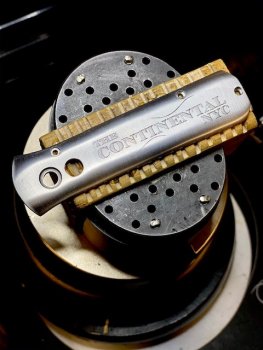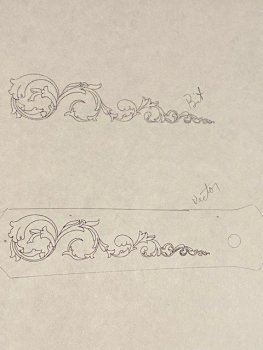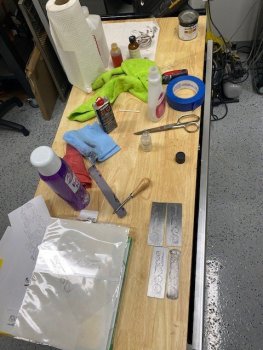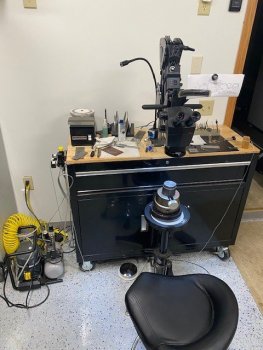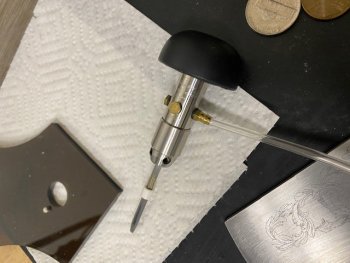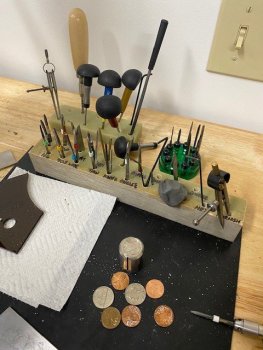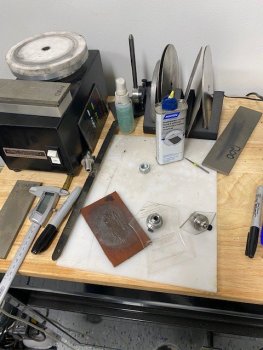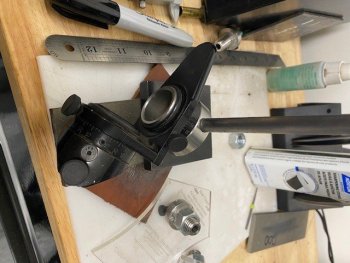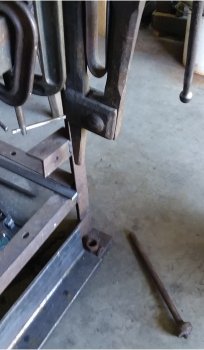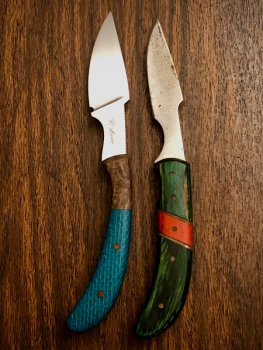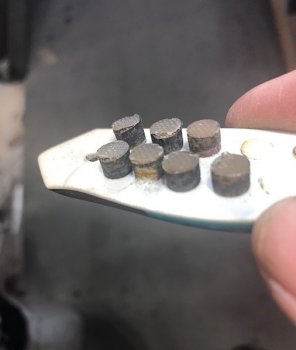I have managed to engrave the front side of my recent auto knife build. Lettering is harder than scroll engraving. It is much more demanding and you can't hide any mistakes. I practiced this one for 15 hours before I worked up the nerve to cut it on the knife.
View attachment 75220
I use an Ipad and Procreate app to draw. After the drawing I export it to Coreldraw where I change it from a bit map file (basically jpeg) to a vector file. The vector allows me to resize the drawing with out a bunch of jagged lines. Below this drawing shows how fuzzy a bit map is compared to the vector version.
View attachment 75221
After you get the drawing file sized right, you need to put it onto a stencil medium that you can transfer to your work. This is mostly voodoo. There are several ways to do this and some are better than others. Basically you print out your drawing (in reverse) and then use a chemical to pull the ink from your print out to the work piece. Some printers work, others don't. You have to dig through the web to find which ones to use. In the lower right corner you can see 4 practice plates I will cut before I even consider cutting the actual knife handle on the back side.
View attachment 75222
Work space needed for engraving can be very modest. This is in my garage at home.
View attachment 75223
I use a Lindsay classic airgraver. Many also use GRS engraving machines. There are also a couple more systems out there like Enset and the digital pulse system I can't remember the name of right now but Lindsay and GRS are by far the most used in the US.
View attachment 75224
Gravers have different geometry on their cutting end. 90% of the time I use one graver but these others are used with specific cuts.
View attachment 75225
If you engrave, you will need to sharpen - a lot. Engraving is 2 parts engraving and 1 part sharpening. I use several systems to get the graver geometry where it needs to be. Once you sharpen a graver, you inspect it under the microscope and make adjustments. A difference of just a couple thousands in symmetry can really make for a bad cut.
View attachment 75226

